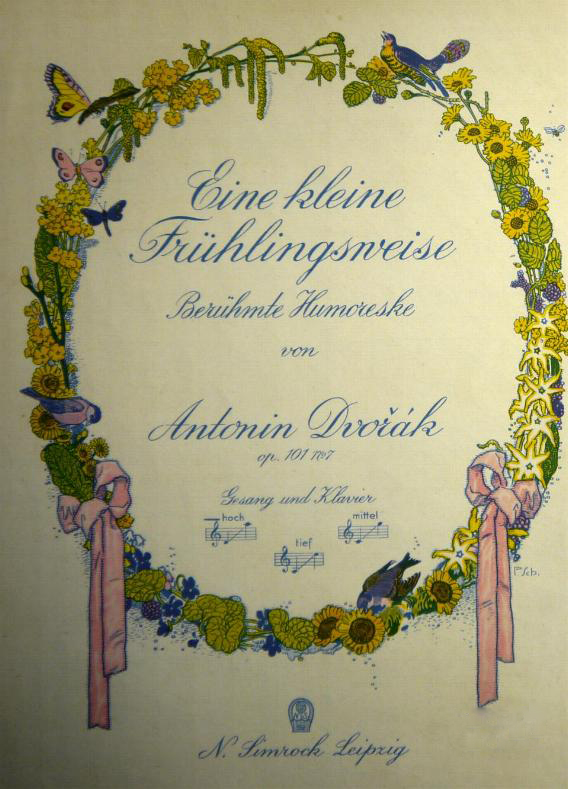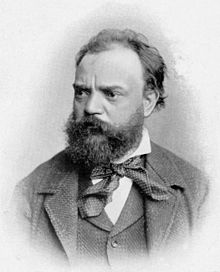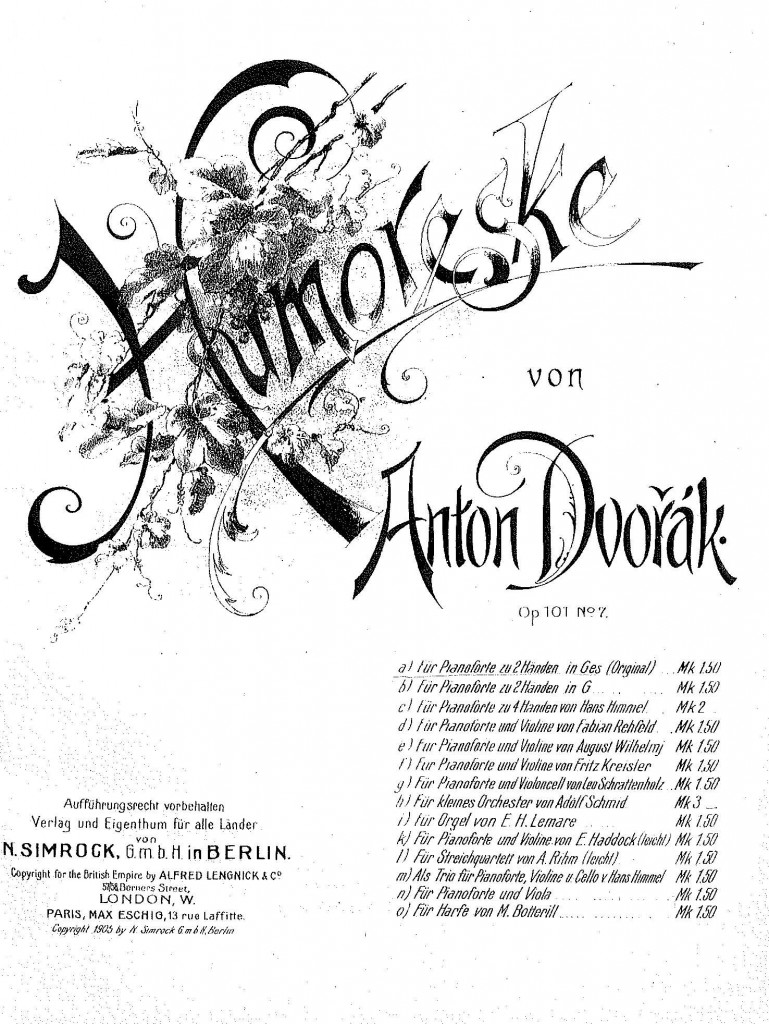Many a reader will be thinking, I must be mistaken in the season: Starting the fall with a spring blog?
 But my unseasonable posting has a reason. That is to say, an edition was just published in the G. Henle publishing house that contains a small piece most likely known to most of us as “Spring Melody” by the Comedian Harmonists (an arrangement of an original song version, with lyrics by Hans Lengsfelder). But what’s behind this catchy tune, and what does it have to do with the G. Henle publishers?
But my unseasonable posting has a reason. That is to say, an edition was just published in the G. Henle publishing house that contains a small piece most likely known to most of us as “Spring Melody” by the Comedian Harmonists (an arrangement of an original song version, with lyrics by Hans Lengsfelder). But what’s behind this catchy tune, and what does it have to do with the G. Henle publishers?
“Spring Melody” is originally no. 7 of the solo piano cycle Humoresques op. 101 by Antonín Dvořák, published in 1895. Dvořák created these eight miniatures during his American period in 1894. He evidently sketched the first ideas while still in New York, but the draft of the eight “easy little piano compositions” (thus, the composer in a letter to his publisher) was done during Dvořák’s home leave spent in Vysoká, Bohemia. How the eight pieces came by their title “Humoresques” is not at all clear. In the sketchbooks there is, in fact, evidence that the composer had originally considered a series of Scottish dances, hence Ecossaises. And with their regular eight-bar phrases and dance-like air, the pieces, without exception in 2/4 time, are actually reminiscent of those Ecossaises popular since ca. 1800 in all of Europe. Even composers such as Ludwig van Beethoven and Franz Schubert contributed, incidentally, to this genre (see, for example, HN 74 and HN 76 or HN 449.
 What finally motivated Dvořák to call the pieces “Humoresques” is not known. As early as in the autograph, the composer at any rate headed his cycle with the Czech “Humoresky”, thus making the title unmistakably authentic. In return, this manuscript poses a whole series of questions. It did not serve, that is, as model for the first edition, published at the beginning of 1895 by the Simrock publishers, but seems rather to have been a preliminary first draft, showing numerous corrections and deletions; much is later indicated in pencil, and even the order of the eight pieces differs from that in the first edition (“Spring Melody” is, for example, no. 6 in the autograph). So, there must have also been another, revised manuscript, presently lost, that Dvořák sent to his publisher to serve as engraver’s model. That Dvořák proofread the first edition can, in turn, be documented, therefore this served as the main source for our edition. Between autograph and first edition there are, nevertheless, numerous differences, making it often impossible to decide whether these are intentional or inadvertent.
What finally motivated Dvořák to call the pieces “Humoresques” is not known. As early as in the autograph, the composer at any rate headed his cycle with the Czech “Humoresky”, thus making the title unmistakably authentic. In return, this manuscript poses a whole series of questions. It did not serve, that is, as model for the first edition, published at the beginning of 1895 by the Simrock publishers, but seems rather to have been a preliminary first draft, showing numerous corrections and deletions; much is later indicated in pencil, and even the order of the eight pieces differs from that in the first edition (“Spring Melody” is, for example, no. 6 in the autograph). So, there must have also been another, revised manuscript, presently lost, that Dvořák sent to his publisher to serve as engraver’s model. That Dvořák proofread the first edition can, in turn, be documented, therefore this served as the main source for our edition. Between autograph and first edition there are, nevertheless, numerous differences, making it often impossible to decide whether these are intentional or inadvertent.
The answer seems clear in many cases, such as, for instance, in no. 2, m. 37. See an excerpt below from our Urtext edition, including the footnote.
Here, the editors decided to use the autograph version in the main text, although the main source, the first edition, shows another note. The d sharp2 found there is, though, unlikely for various reasons. If we look at the rest of the chords in this measure – and indeed in the right and left hands –, a change of the lower note to d sharp2 at the measure’s end is illogical. This surmise is supported by a glance at measures 39, 41, 43. We are thus justified in assuming an engraving error here in the first edition and in putting its reading only in a footnote.
The case in no. 3 is something else. In mm. 30 as well as 41 the autograph has readings that are indeed conceivable. The music text in the first edition is, however, basically not in doubt here. Our edition therefore indicates the differences in the autograph “only” in a footnote, respectively.
These examples show what kind of questions repeatedly faced the two editors, Christian Schaper and Ullrich Scheideler, in preparing the edition: Which is valid, first edition or autograph? Both sources are problematical: the autograph because it represents a preparatory stage, the first edition because it was indeed proofread, but evidently not thoroughly enough.
Fortunately, “Spring Melody”, Humoresque no. 7, is hardly affected by such text problems. It was, incidentally, already so popular 10 years after its first publication that Simrock brought it out as a separate edition in 1905 (Dvořák died in 1904). Even then, there were innumerable arrangements in circulation, as the list on the title page impressively proves – none of them, mind you, by the composer himself! Against this background, the reworking of “Spring Melody” already seems almost quite logical….
Our Urtext edition will, however, go to bat for the original version – and in addition for the rest of the seven Humoresques unjustifiably cast entirely in the shadows. They are charming piano miniatures, easy to play, which, although striking their own tone entirely, are genuine Dvořák through and through. See for yourself!



